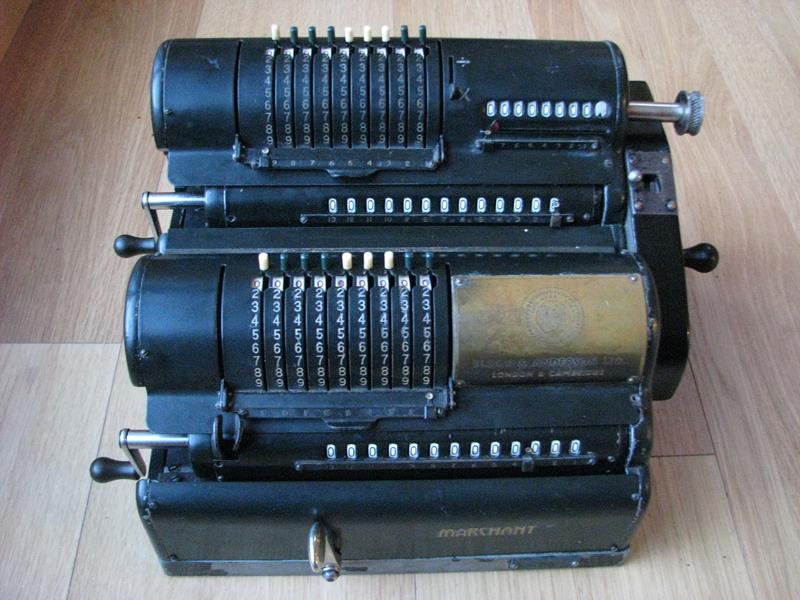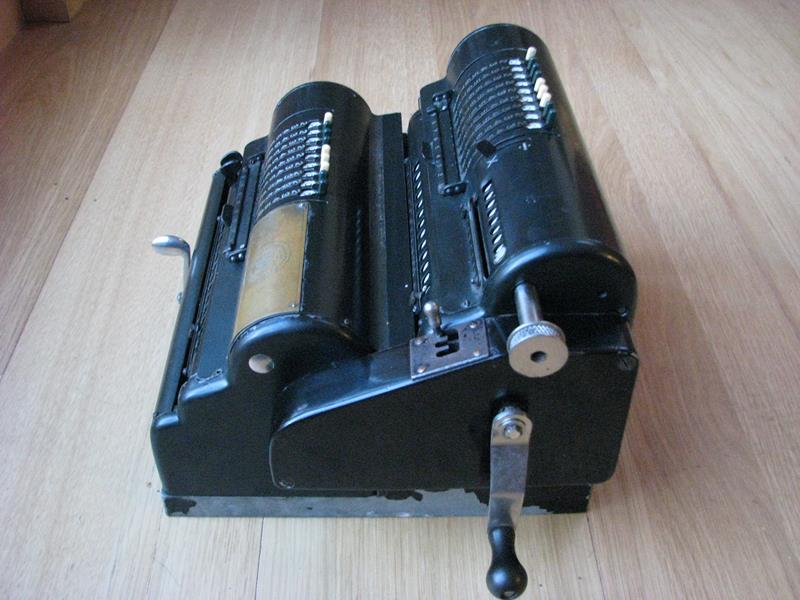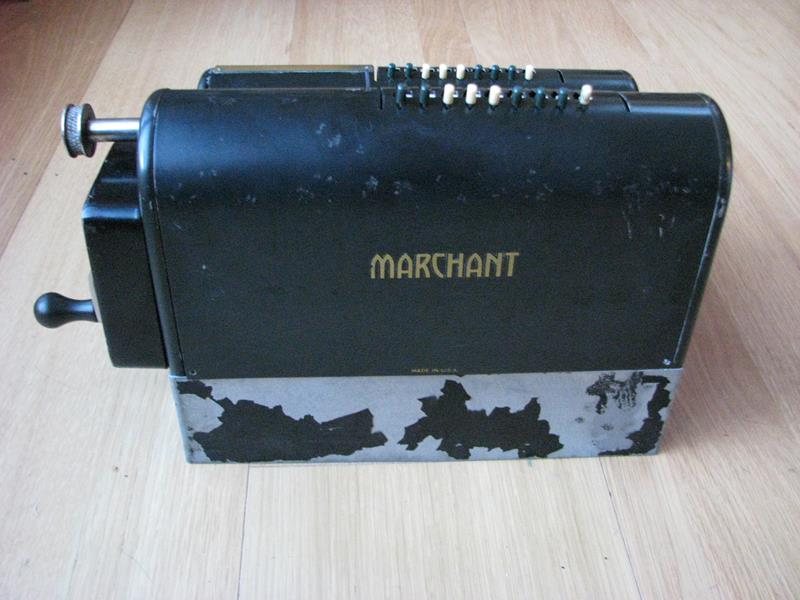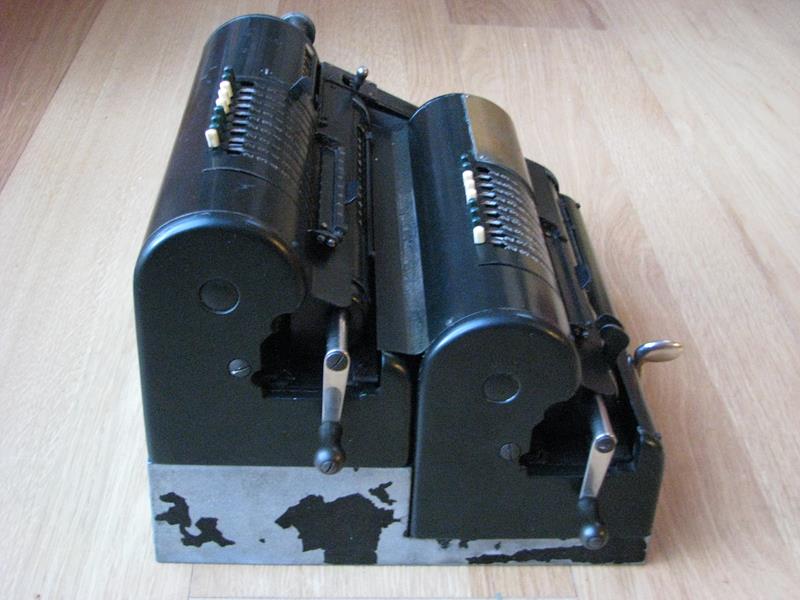Marchant Twinplex
This has been a restoration that has been a VERY long time in the making. I have two Twinplexes. One came from Canada in 2008, and one from the UK about a year earlier. This one is the Canadian one, the UK machine is still awaiting work (gearbox and carriage issues), but I suppose I shouldn't wait to long with that, because now it is all fresh in my mind.
Apart from taking five years to even start the restoration, it has also been a very long restoration - in the sense of pure man-hours spent taking the machine apart and putting it back together. The reason is that Marchants are something completely different to your average pinwheel calculator, so the average enthousiast and restorer is a little out of his/her comfort zone with them. For starters, they're not pinwheel machines, they utilise a principle called "geared sectors" which allow the input pins to remain stationary, as is also the case in Hamann-Manus machines.
It took me a very long time to get started because of one simple issue - the main thing immediately obvious on the machine was that the input of the top machine was not "clicky" as it is supposed to be. My conclusion was that probably a spring broke or came off somewhere. On opening up the machine, however, it became obvious that nothing was amiss at all - the arms with rollers that provide the clicking were just extremely stiff to return once they were moved out.

In order to get at these, you need to undo four screws that hold them to the carriage frame, and this is only possible from the bottom end of the machine - which, incidentally, is where this very large aluminum block is situated that connects the two machines together. The screws to undo the rear/top machine from the base need a special screwdriver to reach them, because they are so deep inside the aluminum block. No amount of oiling of hinges at the bottom of the roller arms appeared to help. So, check-mate for about five years.
Finally, I was spurred on by a chance email of someone who mentioned he'd like to buy one of the Twinplexes. Obviously it would not do to sell one in an inoperable condition, so I set to work repairing Twinplex number one.
The first immediate issue I came across was that the carriages were stuck. For some reason, if you leave the machine alone for a year or so, this is bound to happen. The other one was extremely stuck as well when I got it. Wartime oil apparently turns to glue after some time, and for some reason the rails that keep the carriage in place also appear to deform slightly over time, tightly grabbing the bottom plate of the carriages. If you take all the covers off and undo the screws of the front carriage rail, then lever it off its locating pins, usually you can get things to move. Oiling well, and not doing up the carriage rails too firmly helps with this issue.
The next issue was that one of the carriages didn't fully clear. I started by taking apart a carriage from a parts machine to see how it is put together. Usually the clearing mechanism is by a lever that gets pulled out on turning it, which then shifts clearing pins on the axle into contact with a step on the numeral wheels. If the pins break, that numeral wheel will no longer clear. It turns out that Marchant has a completely different system, and if you are used to the other one, one that is not self-evident to disassemble.
First of all, the lever on the carriage just turns, there is no in-outward movement. That is suspicious in itself. The main axle is pinned to the lever, and also to a spacer inside the carriage.
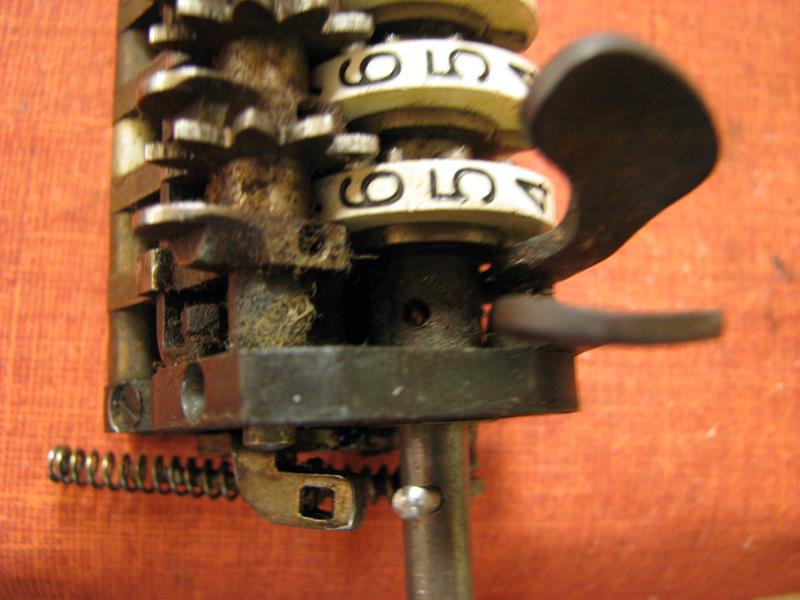
These pins need to be knocked out. Make sure you hit the small end! Then I got really stuck, because nothing I would do would shift the axle out towards the left. I kept turning it, making sure all the numbers were lined up, as this is a prerequisite for the clearing pins to move through, but I just couldn't find where in the rotation to push or pull. The solution came when I convinced myself there could be no pins. A mighty tug on the axle succeeded in shifting it - Marchant apparently used tiny ball bearings inside the axle that move along the numeral wheels.
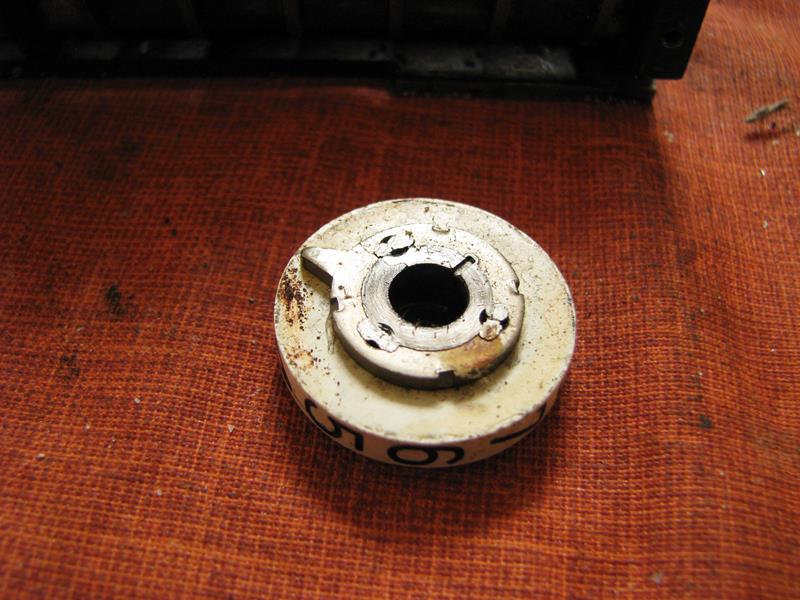
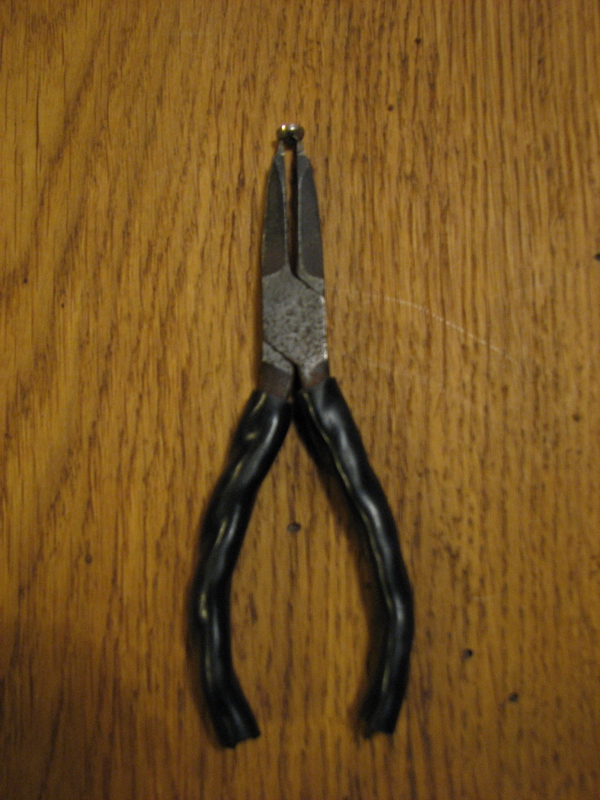

When they return to zero, there is a system that locks the numeral wheels in place, and the ball bearings then click past their step.
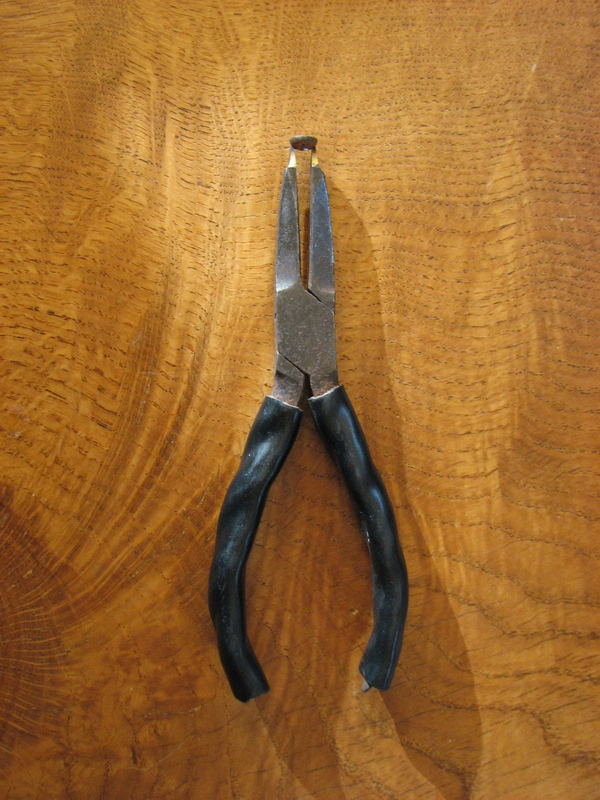
After this small Aha-erlebnis, it was very obvious what to do - instead of disassembling the offending carriage on the Twinplex, it was just a question of lubricating all the rotating components without any disassembly at all, and sure enough, 10 minutes later the carriages would both clear reliably on all digits.
Similarly, as soon as I got the screws inside the aluminum block to let go, and could disassemble the bank of "fingers", there was no way to get them off the axle - everything is pressed in place. It did provide the opportunity to work them past the trajectory they normally move along, and this and plenty of oil soon freed them up. Another case of wartime oil turning into glue?
With the two major perceived problems solved, I reassembled the entire machine, and it would apparently work fine. When I wanted to photograph it though, I noticed that the x / : lever was missing entirely. Huh ?
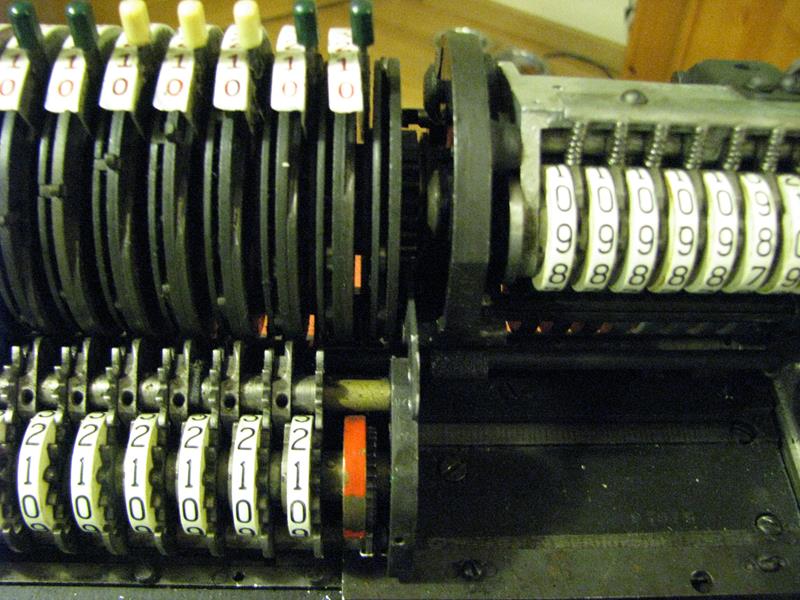
So I took one out of the parts machine, and then the comedy started in earnest. It turned out that Sergeant "I can fix that" got his hands on the poor machine at some point, and literally messed up the entire timing of the rotation counter. I was suspicious why all the screws on the machine were so worn out, and why the input clearing bars were missing - this is a tell-tale sign someone has tried their hand at a fix and failed (with the intent to return to it later, but never doing so, and losing the disassembled clearing bars and all the tiny cover screws in the process). Literally everything was timed wrong, and no other solution was found than to remove the direction switch lever, because the shifting gear would block every time - no wonder, as only three teeth on one side and three teeth on the other side are filed to shape to easily slide into the neighbouring gear, and if you put them somewhere else along the circle obviously everything will block. The path taken by the power from the crank is quite convoluted - it goes first past the entire counter part of the machine to the other end of the central post, where it connects to the main cylinder (and to the locking disc for carriage movement). From there it goes back through the central post to the counter tens' carry cylinder, to which it connnects by the moveable gear discussed higher, which has to shift either into direct contact or via an intermediate gear in order for the cylinder to reverse direction. The counter tens' carry cylinder in its turn times the axle with the counting tooth for the counter register. Before you can make sure everything is engaged into the correct position, you need to reassemble everything and screw the machine back to the large aluminum block. Then you find some gear which is off by one tooth somewhere, and you can start over entirely. There are about 6 possible disconnects along the gear train, all of which have to be assembled correctly, 2 at a time on each side of the central post and at the righthand end of the machine. I am not exaggerating when I write that I've take the entire top machine apart perhaps 20 times before I finally got it all right. Three long days of work, in all.
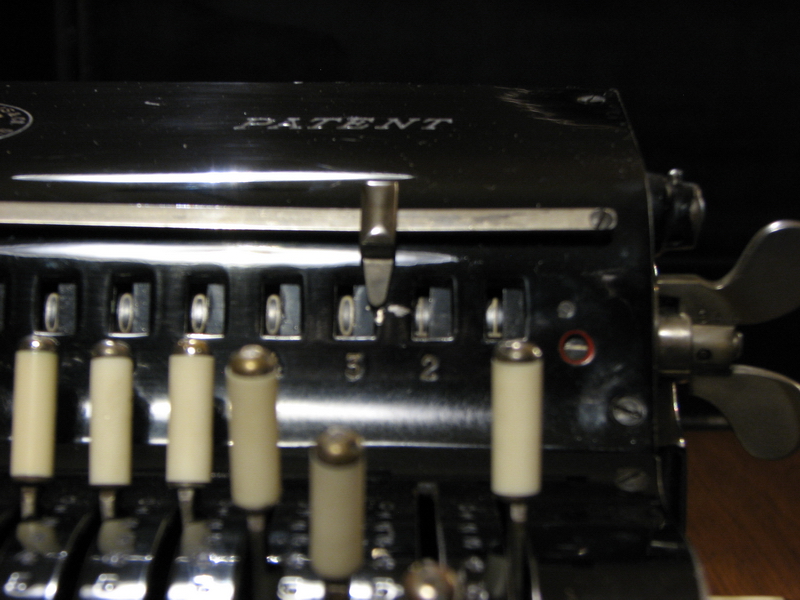
The last insult was when everything seemed to work, and on continuing the reassembly, I couldn't get the carriage in - the locking disc was off by a few teeth. So back to square one ... in any case, I currently have an intimate knowledge of how to time a Marchant XL, and by extension the Twinplex - I better make use of it!
Now on to the pertinent features of the machine. It consists essentially of two Marchant XL machines, which were assembled together as a Twinplex straight off the assembly line. The top and bottom machine in this specimen are numbered sequentially with number 97874 and 97875. The machine then gets renumbered with a Twinplex serial number at the righthand front corner - n° 185 in this case.
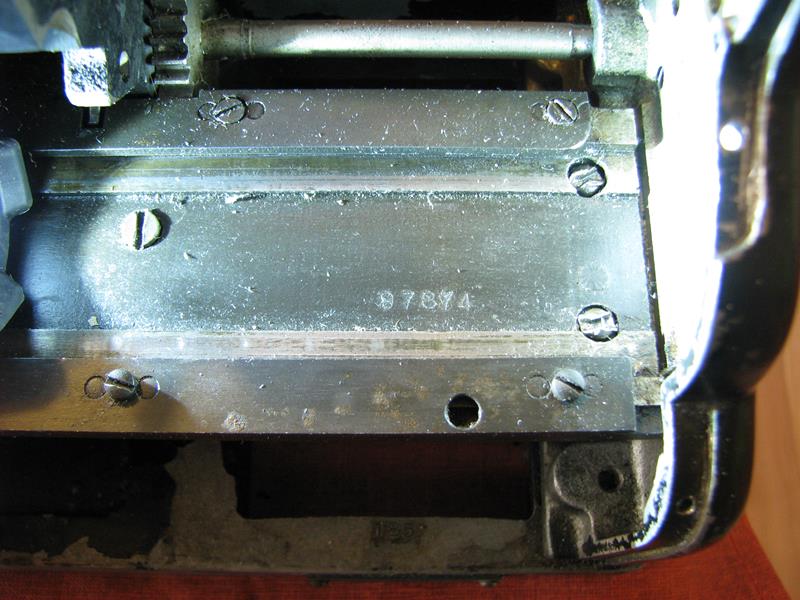
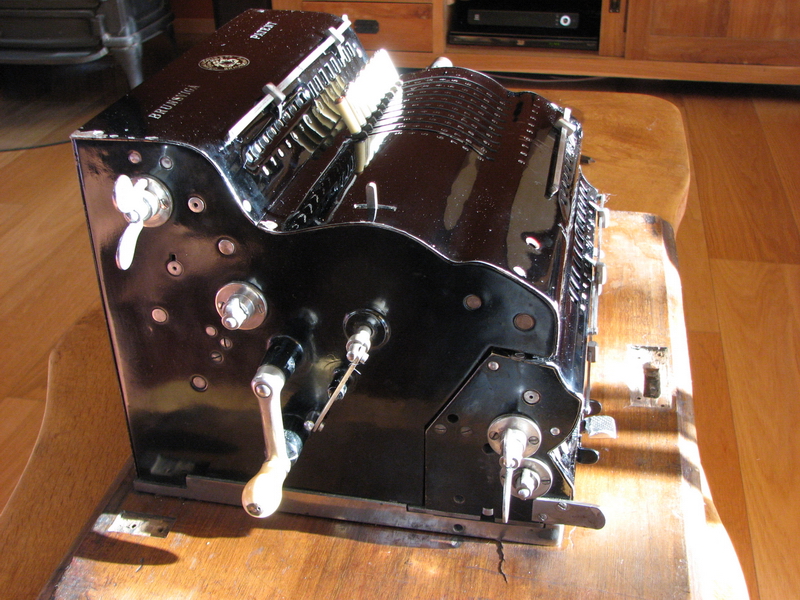

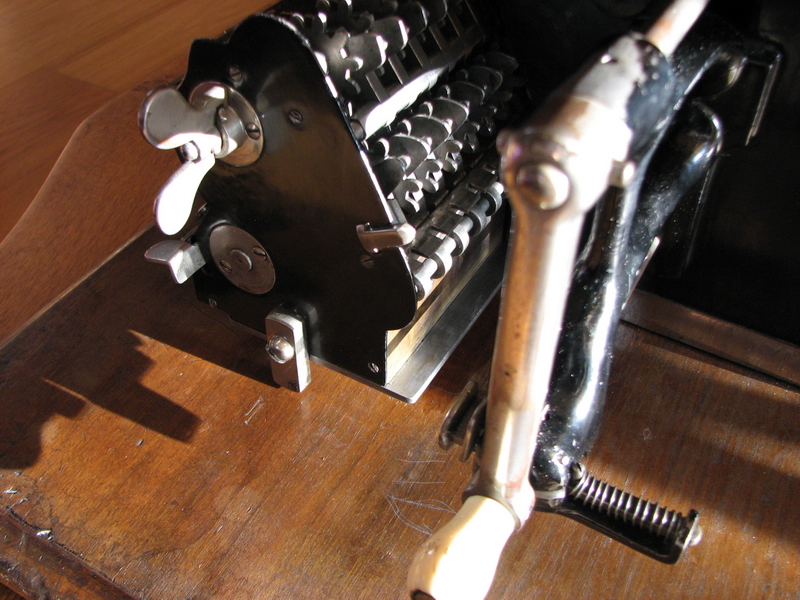
The top machine contains the counter register, which retains all its normal functionality. It is omitted entirely in the bottom machine.
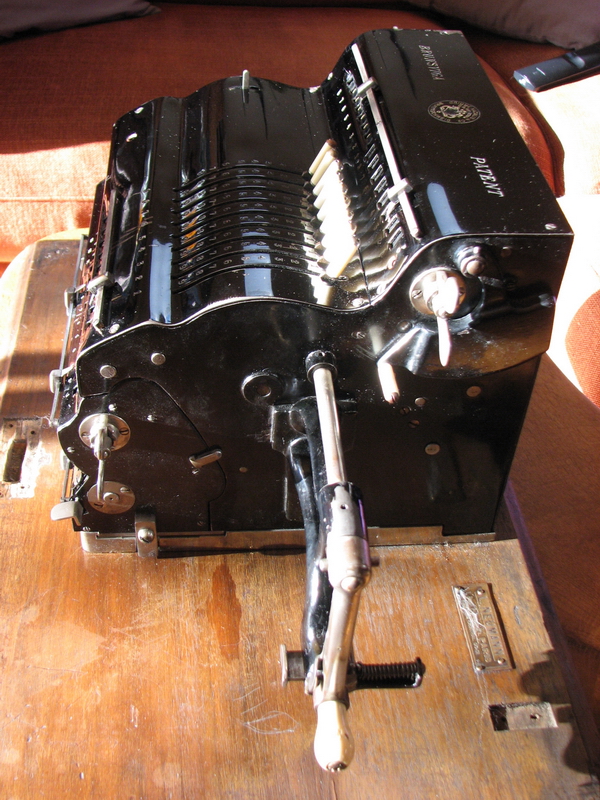
Some adaptations are made. For some reason, the carriages only contain 13 digits, the rest is taken up by spacers. The carriage movement mechanism is missing in the top machine, both from the frame, and from the carriage. This means the cover plate is a specially made item, as is the input cover for the bottom machine. The input cover for the top machine is entirely normal, including the sticker on the inside which lists all the patents - except for one thing. The ninth counter wheel, all the way on the right, is inaccessible, since the carriage in a normal XL butts up to the righthand sideplate of the machine, and for the Twinplex, there is a substantial aluminum connecting piece (which consists of two parts with a hinge, to prevent blocking the carriages through expansion when the temperature changes) between the top and bottom carriage, so the rightmost counter register hole is blocked off, and the counter only has 8 digits in a Twinplex. What I'm not sure of is the mechanism for blocking the carriage shift while the machine is in operation. The Twinplex has a large metal disc with a cutout, whereas the normal XL I have which is very close in serial number has a blocking lever which is operated by an cam. Noth systems seems utterly interchangeable to me - the cam and lever perhaps save a bit of metal, which was important during the war. One more feature is the clearing of the result register, which cannot be done by the usual small lever, since the gearbox cover is in the way. Thus, a sort of extension is provided, with a wheel on the end which is supposed to have a large rubber O-ring for grip. Now this, in turn, is in the way of the main crank, so that is also proprietary to the Twinplex. It has a bend, which allows it to clear the counter clearing knob.
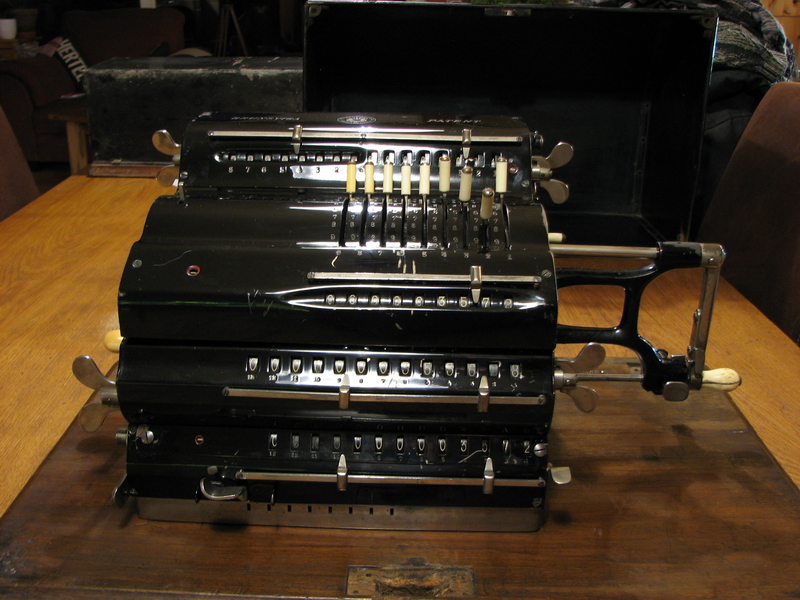
And finally, the carriage shift lever is a bit larger than on an ordinary XL too. I think they quickly found out that the "normal" lever didn't provide sufficient leverage to move two carriages.
The machines are obviously behind each other, which is quite different from most other double calculators, which are usually side-to-side. This means the machines each retain their main axles, which instead of being connected to a crank, have a gear wheel mounted, which ties in to a complicated gearbox on the righthand side of the machine.

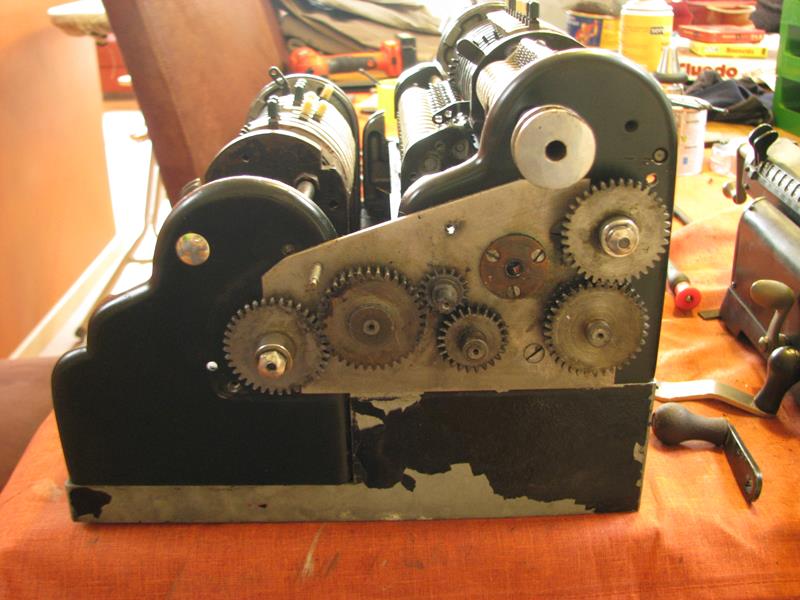
There is a cute little gearshift lever, which allows to shift the machines from "both machines same direction" to "top machine only" to "reverse bottom machine". The lever shifts a small gear on a axle from left to right, and the machine is blocked at the same time by a pin falling into a hole in one of the larger gears.
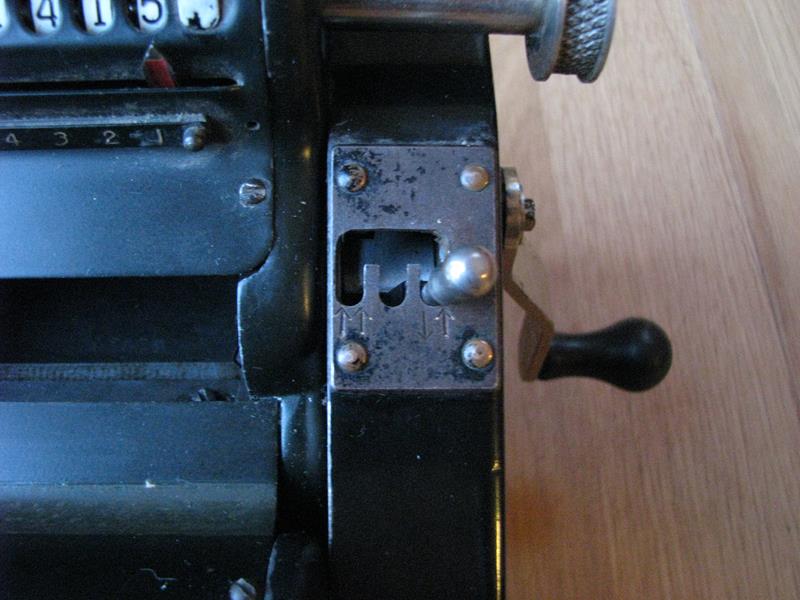
The counter mechanism is simply identical to a normal machine, so you choose between "X" and ":".
Paint quality on these wartime Marchants is horrible, on the machines proper, but especially on the aluminum base block. It has lost more than 50% of its paint by now. I may have a batch matched and mixed up and redo the entire base.
And finally, here is the portrait of the finished machine, all ready to go, as demonstrated by simultaneously calculating pi squared in the top machine, and the complement of pi times pi in the bottom machine.
